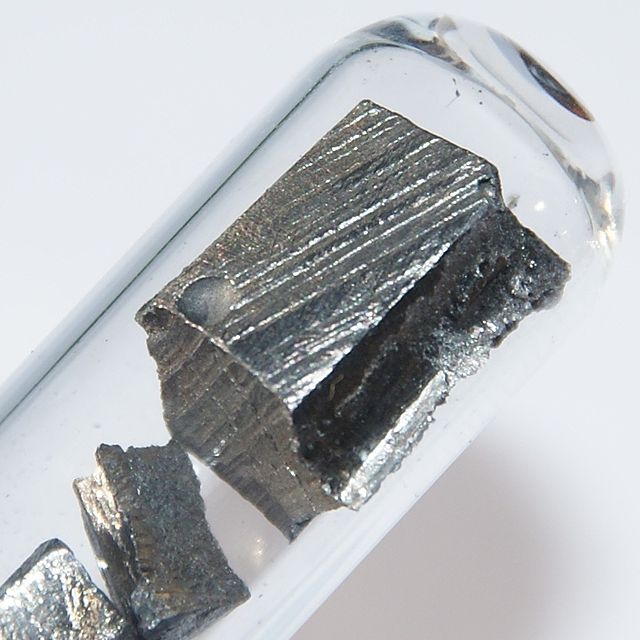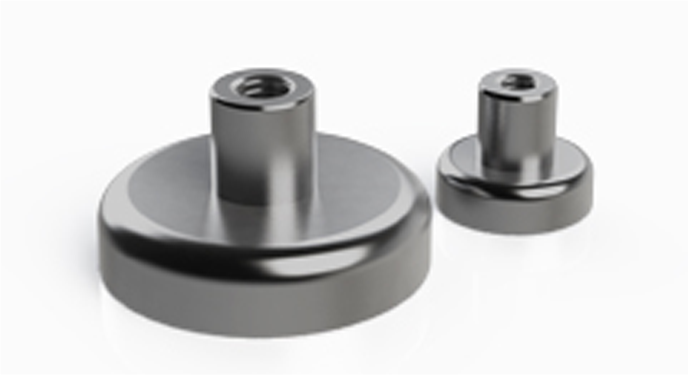What are Neodymium Magnets?
Mar 25th 2022
Rare Earth Magnets
Rare earth metals are relatively abundant in the Earth’s crust, but it’s hard to find them in significant concentrations. Though plentiful, they are dispersed very evenly across the Earth. Unlike coal or iron, which forms in seams and lends itself well to mining, rare earth elements are difficult to find in a significant amount in a single place. Because they’re so inaccessible, and because mining these minerals can be so challenging, the “rare” term refers to their accessibility rather than their abundance. Rare earth magnets are the strongest type of permanent magnets available. They generate stronger magnetic fields than ferrite or ceramic magnets.Neodymium Magnets

Commonly known as Neo magnets, neodymium magnets are produced from an alloy of neodymium (Nd), iron (Fe), and boron (B). A neodymium magnet alloy forms into microscopic crystals. These crystals can be aligned by a powerful magnetic field during manufacturing, which results in all of their magnetic axes pointing in the same direction. Once magnetized, the neodymium magnet is more or less permanent. The strength of a neodymium magnet is determined by a number of factors, like the tendency of the crystal structure to magnetize along a specific axis. In neodymium magnets, the crystal lattice is very resistant to changing its magnetic direction. This gives the magnet a very high coercivity, which is a way to quantify its resistance to demagnetization. Once magnetized, neodymium magnets are generally considered permanent magnets. Any magnet can lose its magnetic charge over time, and neodymium magnets can be subject to demagnetization in high temperatures. But neodymium magnets are generally more resistant to demagnetization during regular use than ceramic or ferrite magnets.
How Were Neodymium Magnets Discovered?
Neodymium magnets were invented, not discovered. In 1984, two different companies discovered the formula for neodymium magnets independently. General Motors (GM) and Sumitomo Special Metals both learned how to make neodymium magnets almost simultaneously. Before neodymium magnets were invented, GM, Sumitomo, and other companies were using samarium cobalt magnets (SmCo5), another variety of rare earth magnets. As the cost of raw materials for samarium cobalt magnets increased, these companies began researching alternatives.
Rare Earth Oxides, clockwise from top center: praseodymium, cerium, lanthanum, neodymium, samarium, and gadolinium
Because neodymium magnets were invented, the process for making them is patented. One of the richest sources of neodymium in the world is China, so Chinese manufacturers control the majority of the world’s neodymium magnet production. Some Chinese factories pay a licensing fee to use the patented formula and technique for neo magnet production, and others attempt to duplicate the technique without paying the licensing fee. This is the difference between “licensed” and “unlicensed” production of neodymium magnets. Unlicensed neodymium magnets may be cheaper than licensed magnets, but purchasing unlicensed magnets is illegal and can result in lawsuits from the patent holders. Additionally, unlicensed factories sometimes use inferior raw materials or cut corners on the manufacturing process, so you can’t always be certain to receive a high-quality product.
Are There Different Types of Neodymium Magnets?
The performance of a neodymium magnet may differ depending on the magnet’s material, grade, and other factors. A magnet’s grade specifies the quality or purity of the raw material used to construct the magnet. If all other factors are equal, a magnet with a higher grade will have greater strength. The magnet’s grade is listed as it’s “N” number. The most common grades for neodymium magnets are N35, N38, N40, N42, N48, N50, N52, and N55.
The Gauss rating of neodymium magnets determines how fast the magnet works. This may be referred to as magnetic induction or magnetic flux density, and it’s sometimes represented by the symbol G or Gs. The Gauss system of measurement, which is still commonly used in magnetism, has largely been supplanted by the International System of Units (SI), so you may see a Gauss rating expressed in SI rather than Gs. The SI unit for magnetic flux density is the Tesla (T), which equals 10,000 gauss. In addition to grade and magnetic flux density, a magnet’s performance may be influenced by its shape and thickness. In most cases, with all else being equal, larger magnets tend to produce greater pull strength than smaller magnets. Environmental temperature and proximity to other magnetic material can also affect the performance of the magnets. High temperature applications and competing magnetic fields can reduce the performance of neodymium magnets or even de-magnetize them, so it’s important to understand how the magnet will be used when selecting the right magnet for the job.
How are Neodymium Magnets Coated?
Because rare-earth magnets are very brittle and prone to corrosion, they are typically coated or plated to protect them from breaking or chipping. Without a coating or plating, the neodymium magnet can flake and chip, leaving sharp pieces behind. The most common plating process is a two layer process where copper is used as the first (interior) coating and nickel is used as the second (exterior) coating. Three-layer coatings with nickel, then copper, then nickel, can be ideal for high abrasion environments. Other coatings may include zinc, gold, and other epoxies, plastics, metals, or polymers. The plating of neodymium magnets is an important process. The neodymium substrate can oxidize quickly without a protective layer, leading to significant damage to the magnet. When magnets are broken or chipped and the inner layer is exposed, it’s important to dispose of the magnet as quickly and safely as possible. Because neodymium magnets are designed with a microcrystalline structure, they produce small and often invisible shards that can become embedded in skin or eyes.Where are Neodymium Magnets Used?
Neodymium magnets are used in a wide variety of applications and can be found in cellular phones, computer disk drives, speakers and earphones, cordless power tools, and other electronic products. The increased versatility of neodymium magnets continues to unlock new applications in areas where magnets have not been used before. This enables companies like Amazing Magnets to design, develop, and produce innovative magnetic products that simplify everyday living.Mar 25th 2022
